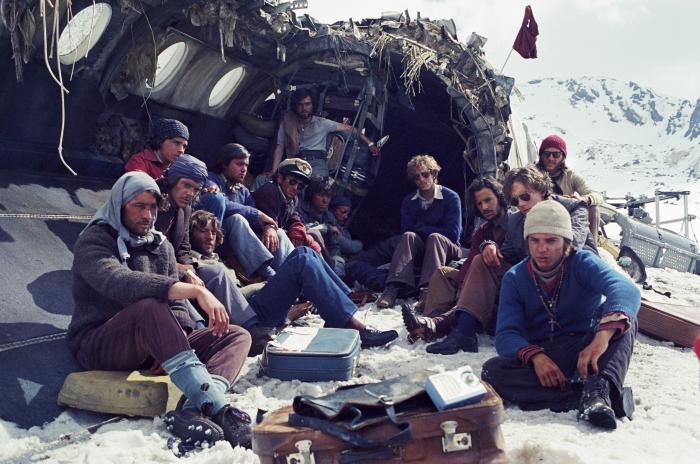By Petr Navovy | Film | February 23, 2024

It’s a series of questions that confronts every filmmaker setting out to adapt a tragic real-life story for the screen: How do you do so without being exploitative? What do you zoom in and focus on? You only have limited screen time—how will you use it? For director and co-writer J.A. Bayona (The Orphanage, excellent; Jurassic World: Fallen Kingdom, awful), whose 2023 film of the Uruguayan 1972 Andes flight disaster, Society of the Snow (La sociedad de la nieve), swept the 38th Goya Awards earlier this month, the answer was to approach the story with a sense of poetic awe that tries to match the forbidding beauty of the landscape while also leaning into a level of tear-jerkiness that, all things considered, feels appropriate for the subject matter.
For the most part, Society of the Snow works very well. Based on the Pablo Vierci book of the same name that chronicled the crash of Uruguayan Air Force flight 571, a small plane that was chartered to transport a rugby team from Montevideo to Santiago, Chile, but which ended up crashing into a gigantic glacier in the Andes, Bayona’s treatment doesn’t shy away from the brutality of the situation in which only sixteen of the forty-five who boarded the flight survived, but it doesn’t revel in it either. The crash sequence itself is almost sickening in its unflinching depiction of how the human bodies on that plane were immediately impacted by the collision—with the sound design especially causing visceral reactions in the viewer—but that is over relatively quickly. What follows is a slowly unspooling tragedy amid devastatingly beautiful surroundings.
The movie is populated almost entirely by Uruguayan and Argentinian newcomers or relative newcomers, all of whom commit to their roles and are never less than fully believable and easy to empathise with. It has a chunky runtime of one hundred and forty-four minutes. I had assumed this would be because of the sizable lead-up ahead of the crash, and that a significant amount of time would be devoted to getting acquainted with the personalities of those involved first, but this wasn’t the case. We are given minimal time with the people who board flight 571. By the time of the crash, I properly recognised two, three, maybe four at a push, of the young men (the vast majority of those on board were male). We get to know who they are mostly by seeing how they respond to the unimaginable horror of seventy-one days on an Andean glacier, and even then the characterisation is kept relatively austere. It’s a bold storytelling choice.
I keep trying to make another version of the film in my head in which it follows a different track in this regard, but that’s not the film that exists. Still, I can’t help but wonder. As powerful as Society of the Snow is in the moment—and it very much is, sweeping you up with a heart-tugging soundtrack and warming you with the bonds of solidarity displayed by the survivors—I’ve found my own emotional engagement with the film drop off in the days since I saw it much faster than I would have expected. I’ve been trying to figure out why this is, and the relatively shallow characterisation is the most likely answer I’ve been able to identify. That’s not to take away from what the movie is, and—I think—just tries to be, which is a stirring blockbuster told with heart and respect for the story and people it’s based on, featuring stunning location cinematography (courtesy of DP Pedro Luque (Don’t Breathe)), pulse-quickening action, and, it must be said, impressively authentic looking period costuming and styling. It’s just that for me personally, it didn’t resonate as much as I thought it would. Nevertheless, while you’re in the thick of it, Society of the Snow’s horrific immediacy and narrowed and shrunken horizons of survival foregrounded against the limitless, imposing white of the Andean peaks, will have you on the edge of your seat.